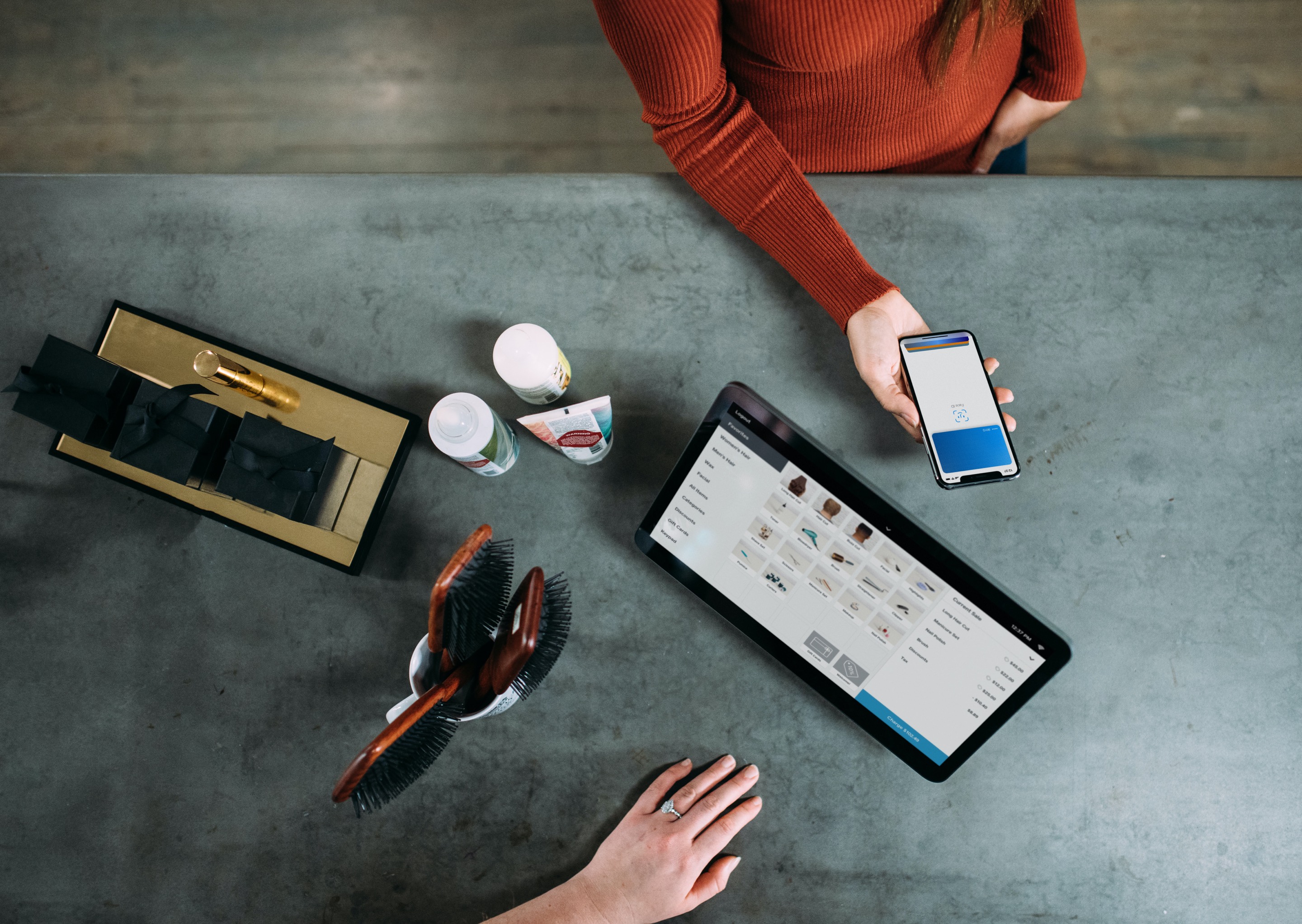A Quick Guide to Pay by Link

The core of any marketing strategy is to get the customer to buy. When they do decide to pull the trigger and make the buying decision, you want to make payment as easy as possible.
In some cases where you don't have access to online billing software or a credit card swipe machine, or if you want to collect B2B payments electronically, sending a payment link is useful. Pay by link is a cost-effective option for processing electronic transactions quickly. With a few clicks, you can send a payment link to email addresses, messaging apps, or any other point-of-contact you have with your customers, and accept payments through a supported gateway like PayPal or Stripe.
A better way to manage your finances
With Hiveage you can send elegant invoices to your customers, accept online payments, and manage your team — all in one place.
How does an online payment link work? How can they benefit your business? In this brief guide, we’ll look at everything you need to add payment link options to your business.
What is Pay by Link?
A payment link describes a method of requesting payment from your customers after they confirm their purchase decision with you. Think of it as a 'Pay Invoice' or 'Pay Now' button sent to your customers, asking them to take action on their purchase confirmation. You can send the payment link via email or over messaging apps, giving you multiple channels of engagement with your customers.
Your customer sees the details of the request on their email or messaging app, click the link, and the link pulls them through to their preferred payment processor. There are all types of online payment link options, including methods that link to your bank account, credit card processors, and PayPal payment link processors.
When your customer decides to pay, they follow the link to their preferred payment processor and finalize the transaction – and you get paid.
Who Needs to Use Pay by Link Processing?
Payment links are useful for all types of business. Online merchants can attach them to electronic invoices sent via email or messaging links, asking customers for payment. These links work at a retail level, and some work with payment processing software like QR codes to enhance the speed of the transaction.
B2B businesses can embed links in invoices for faster payment – switching to payment link processing helps you get paid faster. Stop relying on the antiquated physical mailing of statements; switch to an automated payment link service and start seeing improvements in your creditor collections and accounts issuance.

Create payment requests, share them through any channel, and accept payments using PayPal and Stripe.
Visit Paylinks, now on iOS and Android
If you’re a smaller retailer, and you don’t have the setup to take payments from mobile locations using card machines, try payment links instead. With PayPal Payment link services and other online payment link capabilities, your business can accept payments wherever you go. All you need to do is generate a link and email or message it to your customers.
Your clients receive their invoice and payment link on their phone immediately, allowing them to choose their preferred payment processor, such as a credit card, Google Pay, or Apple Pay.
What are the Benefits of Using a Payment Link Strategy?
Payment Links Make it Easy for Customers to Pay – Payment links make it easy for your customers to choose the way they want to pay. Link your platform to all the top payment processors and give your clients more choice. Let your customers choose the currency – if they’re going to pay you with their local currency or use standard international options like USD and EUR from PayPal accounts.
Payment link companies know that entrepreneurs need to take payments on the go. Statistics show that up to half of all e-commerce purchases occur on mobile devices. Therefore, all payment pages come optimized for an enhanced mobile payment experience. The payment processing is easy to navigate on mobile devices, allowing you to take payments anywhere, anytime.
With mobile payment link options, you can add in other plug-ins like eWallet options making it easier to accept payments faster. You don’t need to know how to code or work in IT to understand how to create and send payment links. The process is straightforward, and there are options to customize your invoicing and payment links with your company branding.
With pay by link systems, you get to send your customer real-time payment requests. Fill out the payment request form with the amount of money, enter the messaging or email details of the recipient, and send you a payment request. Your customer gets the option of making payment through a one-click portal that pulls them through to payment authorization on their payment processing platform of choice.
Payment link systems show your customer that you are keeping up to date in the latest improvements in financial technology, boosting your brand loyalty. It’s an entirely intuitive and secure payment system designed to relieve any sense of doubt in your customer.
To summarize the key takeaways of using pay by link strategies for your online business.
- Accept online payments 24/7 with no hassle
- Permit your customers to make payment at their convenience
- Allow customers to make online payments using their preferred payment processor
- Take payment securely and safely, increasing customer confidence in your brand
- Boost payment efficiencies with messages and email notifications to payment links
- Reduce the need for customer collections and paperwork in your online business
- Remove outdated payment request systems
- Stop errors in payment processing and collections
- Ensure you get your payments on time
- Store your payment records online
What are the Global Trends and Payment Industry Trends in Payment Links for 2021?
Payments are moving into the background in 2021. People don’t want the complication of taking multiple steps to finalize payments. The faster companies and payment processors can move clients through the payment funnel, the better.
Pay by Link through Messaging Platforms
With the world migrating to social media platforms, all your customers are now using apps like Facebook Messenger, WhatsApp, and WeChat all day. Send your customers payment links on their favorite social channels from your mobile device and start a network of customers.
Payments Will Go Touch-Less
With the COVID-19 pandemic sweeping the world, people don’t want to touch other people’s devices anymore. Handing your credit card over to someone seems as if it's a life-threatening experience in some cases. People would rather receive a link to their device, allowing them to control the payment process while remaining secure.
Payments Go Seamless
Customers will want an invisible payment experience online. Frictionless payment systems involve a shift from past methods. Invisible, frictionless payments—this move is a big shift from the past. For a long time, there were just two primary payment experiences. Invisible, seamless payments are starting to blend the experiences of going to a store with shopping online. With new tech solutions, customers can avoid the necessity of inputting their information to make payments. In this case, the payment processor does it automatically through eWallets.
Payments Go Automated
Building on the seamless experience, most of our daily payments will go on autopilot. What to grab that cup of coffee from Starbucks? They’ll have you on file, and your favorite blend is ready to go, without worrying about the payment. Auto payment processors connect to your device through smart technology, without customers needing to lift a finger.
Customer Experience: Millennials are Coming
Millennials are going to start coming into their role as the dominant spending demographic. It’s unclear how current economic conditions during the pandemic will affect payments in this demographic.
While the economic uncertainty remains, we’re sure that millennials are going to want to see more from payment solutions that provide them with a user-friendly digital payment experience. Payment links offer everything millennials want in a convenient tool to pay creditors.
International E-commerce Markets Continue to Expand
Global levels of e-commerce are rising, with more people coming online in emerging markets. According to annual reports, e-commerce sales account for over 17% of global retail sales, with this figure reaching 22% by 2022. Furthermore, e-commerce will eventually eclipse brick-and-mortar retail by 2036. The COVID-19 pandemic could greatly accelerate this timeline forward. We could be seeing the emergence of e-commerce dominating traditional retail by the end of the decade.
Fraudsters are Getting Better
Internet fraud is also a growing problem online. Both financial and identity fraud is an increasing concern, with many institutions involved in payments and data experiencing hacks in recent years. We can expect to see payment link providers implementing AI solutions to protect customers’ data during transactions.
Changes in Tech Solutions
Retailers and entrepreneurs need to change up their tech solutions to involve payment processing options that provide utility to their business and their customer’s experience. Online payment link solutions can help customers make payments from any location using a mobile connection.
What are the Pros and Cons of Using Payment Links with Your Customers?
- The Pros
- It’s a straightforward process: An online payment link provides customers with a simple payment solution.
- It’s global: Take international payments for customers anywhere around the world. Some payment link services come with free currency converters to help you calculate fees.
- It’s quick! There is no faster way for customers to pay you from any location on the planet.
- The Cons
- Fees are pricey: Some payment processors and payment link providers are pricey. Always check the fee schedule before signing up with your payment processing partners.
How you decide to let your customers pay you is up to you. Your business needs to bring in cash, and leaving payment processing options on the table can end up costing your revenue.
If your customers don’t get the payment processing options they want, there’s a 60% chance they will walk away from the deal rather than follow your prompts to close.
Who are the Leading Online Payment Link Providers?
WorldPay from FIS

This payment link provider is one of the oldest payment technology companies serving the e-commerce sector. WorldPay merged with FIS at the end of July 2019. This merger between the number-one-rated merchant acquirer and the number-one-rated global fintech provider is now a global powerhouse when it comes to providing seamless payment solutions to e-commerce businesses.
Adyen

This global payment company helps businesses accept payment for e-commerce transactions., The platform facilitates mobile and POS (point-of-sale) payment options, with more than 3,500-customers. Ayden went public with a listing on the Euronext stock exchange. Ayden creates payment technology that integrates with any business, industry, retail store, or customer journey.
PayPal

PayPal is the most universally used Payment acquirer in the world. It’s an easy way to instantly send payment requests to customers, anywhere in the world, and receive your payments in your preferred currency. PayPal payment link processors are a must-have option for all e-commerce retailers. However, the processing fees are high for merchants.
Stripe

The robust API from this payment processor is a good choice for web developers looking to integrate a payment solution into their project. Stripe provides a merchant account service for its customers, handling all the PCI compliance and your merchant approval processes. Stripe has similar fee structures to PayPal, and it's another expensive but necessary processor to have on your checkout page.
WePay

This payment processor permits internet retailers to accept credit card payments and bank transfers through their e-commerce business. WePay focuses on attracting the independent user, adding e-store pages to its service offering to assist customers with taking payments easily online. The service targets the ticketing, donations, and product industries with online payment link solutions.
Google Pay

This service is Google’s answer to PayPal. Google Pay permits users to pay for their goods and services using a payment account connected to your Google profile. Google also runs a similar fee profile to PayPal and Stripe.
Apple Pay

Apple Pay allows iOS users to make payments in person, using iOS apps, and with online retailers. All Apple devices support the Apple Pay app, making it a convenient way to link your device to your account. There are no fees for Apple Pay, and the Apple Card encourages you to pay less interest.
Amazon Payments

The Amazon API allows its customers to send out money via ACH protocols. Payment fees are like PayPal, Google, and Stripe, with 2.9% + $0.30 per transaction for all payments that are over $10, and they take a lower percentage for larger transactions. All payments under $10 have a fee of 5.0% + $0.05 for every transaction.
Wrapping Up
There are dozens of online payment link services you can use to execute your pay by link strategy. Whether you’re offering PayPal payment link services to your customers, or using any preferred payment link processor, make sure you have what your customers want. By giving your customers a virtual platform to make their payments online safely and securely, you boost your business and remove the guesswork involved with billing and following up on your customer accounts.
Choose an online payment solution that meets the needs of your e-commerce business or offline business activities. The goal of implementing this tech in your company is to make it easy for your customers to pay you, and for you to get paid.
Review the options available to your business and decide on the payment link strategy that suits your e-commerce business.
Join thousands of business-savvy entrepreneurs on our mailing list.
Curated emails that’ll help you manage your finances better.




